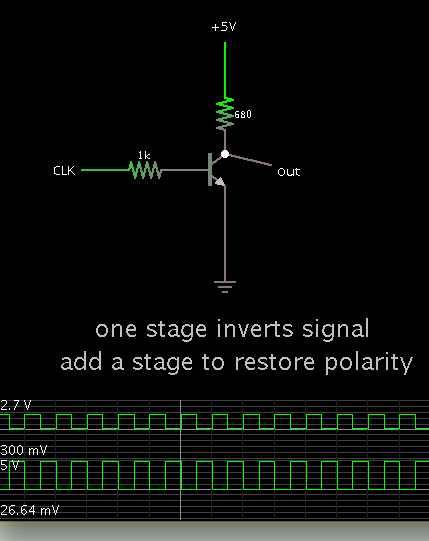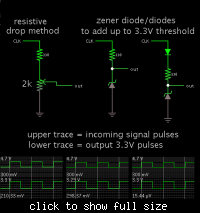mericakgul
Newbie level 2
Hello Guys,
I have a project about communication between two xbee modules but I have some trouble. I used FT232RL for one xbee module to programme it and I didn't have any problem. I could reach to module. To programme other one, I used db9 and max232 but I couldn't reach to modem. After I pressed Test/Query button I had that message "unable to communicate with modem". I used that circuit "http://www.egr.msu.edu/classes/ece480/capstone/spring10/group02/files/Jason_Grimes_AN_ECE480_SS10.pdf" (page5).
I added one more capacitor from pin16 to ground and all of the values of the capacitors are 1 µF. Max 232 works with 5V and my xbee modules work with 3.3v. Do I have to add any resistor between input of xbee and output of db9 or vice versa? I asked this question because I connect pin2 of xbee to pin11 of max 232 and pin3 of xbee to pin12 of max232 directly. I know that xbee modules work with 3.3v but I don't know how much volt is there on pin 11 and 12 of max232. Btw, I am using X-CTU. I tried everything and I need help. I am not sure if I could explain it clearly because I am really confused. I am sorry for that. If you need another information that makes you more clear, feel free to ask. Thank you very much.
- - - Updated - - -
Btw, I am giving data to xbee from PC through max232 and giving power from external power supply to feed my xbee module and max232. Might it be my problem?
- - - Updated - - -
I used that xbee module : "http://www.google.com.tr/imgres?um=1&hl=tr&biw=1454&bih=704&tbm=isch&tbnid=N6KtT8nauRzrKM:&imgrefurl=http://www.warungrobotika.com/&docid=8ar0odfsapC5dM&imgurl=http://4.bp.blogspot.com/-Ul7iemdbeiA/ToUsitBRb-I/AAAAAAAAAdc/-kUJdKylO1k/s1600/XBP09-DPSIT-156.png&w=337&h=283&ei=GPk0UPetJtC0hAf644HADA&zoom=1&iact=hc&vpx=715&vpy=388&dur=2951&hovh=207&hovw=246&tx=116&ty=158&sig=115542301877489106039&page=1&tbnh=162&tbnw=193&start=0&ndsp=21&ved=1t:429,r:17,s:0,i:120"
I don't know if it changes stg
I have a project about communication between two xbee modules but I have some trouble. I used FT232RL for one xbee module to programme it and I didn't have any problem. I could reach to module. To programme other one, I used db9 and max232 but I couldn't reach to modem. After I pressed Test/Query button I had that message "unable to communicate with modem". I used that circuit "http://www.egr.msu.edu/classes/ece480/capstone/spring10/group02/files/Jason_Grimes_AN_ECE480_SS10.pdf" (page5).
I added one more capacitor from pin16 to ground and all of the values of the capacitors are 1 µF. Max 232 works with 5V and my xbee modules work with 3.3v. Do I have to add any resistor between input of xbee and output of db9 or vice versa? I asked this question because I connect pin2 of xbee to pin11 of max 232 and pin3 of xbee to pin12 of max232 directly. I know that xbee modules work with 3.3v but I don't know how much volt is there on pin 11 and 12 of max232. Btw, I am using X-CTU. I tried everything and I need help. I am not sure if I could explain it clearly because I am really confused. I am sorry for that. If you need another information that makes you more clear, feel free to ask. Thank you very much.
- - - Updated - - -
Btw, I am giving data to xbee from PC through max232 and giving power from external power supply to feed my xbee module and max232. Might it be my problem?
- - - Updated - - -
I used that xbee module : "http://www.google.com.tr/imgres?um=1&hl=tr&biw=1454&bih=704&tbm=isch&tbnid=N6KtT8nauRzrKM:&imgrefurl=http://www.warungrobotika.com/&docid=8ar0odfsapC5dM&imgurl=http://4.bp.blogspot.com/-Ul7iemdbeiA/ToUsitBRb-I/AAAAAAAAAdc/-kUJdKylO1k/s1600/XBP09-DPSIT-156.png&w=337&h=283&ei=GPk0UPetJtC0hAf644HADA&zoom=1&iact=hc&vpx=715&vpy=388&dur=2951&hovh=207&hovw=246&tx=116&ty=158&sig=115542301877489106039&page=1&tbnh=162&tbnw=193&start=0&ndsp=21&ved=1t:429,r:17,s:0,i:120"
I don't know if it changes stg

